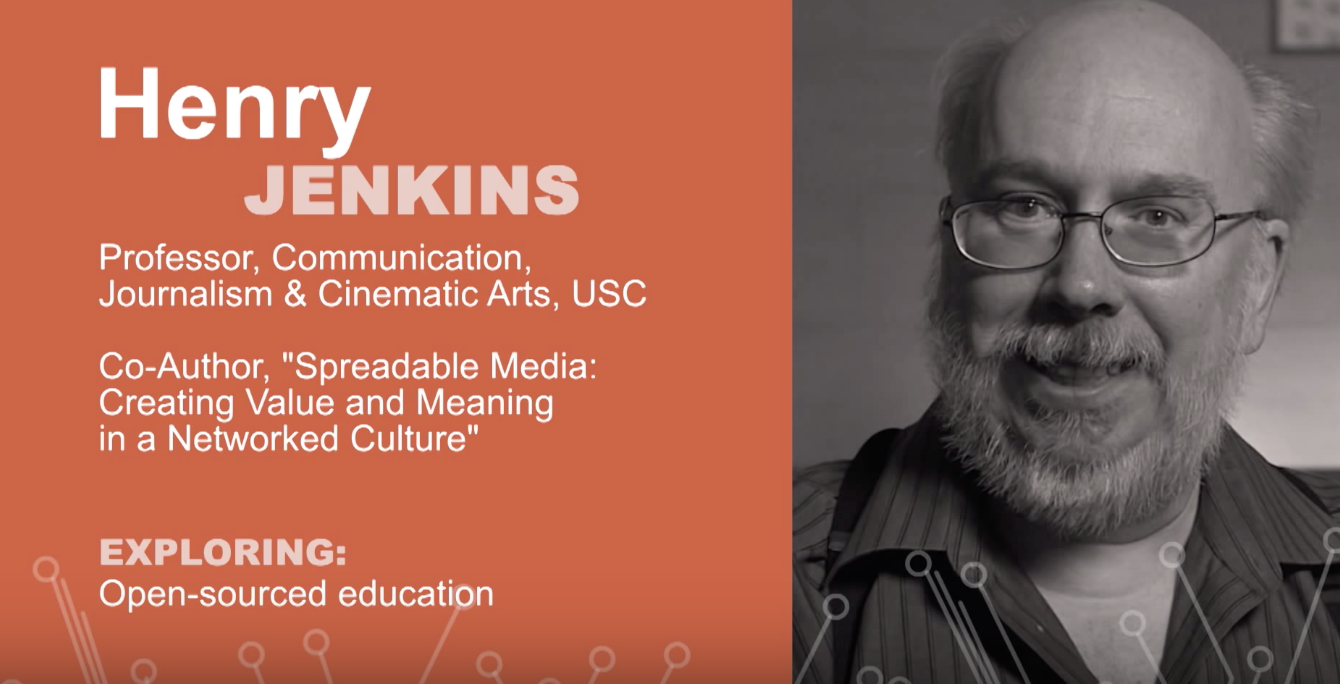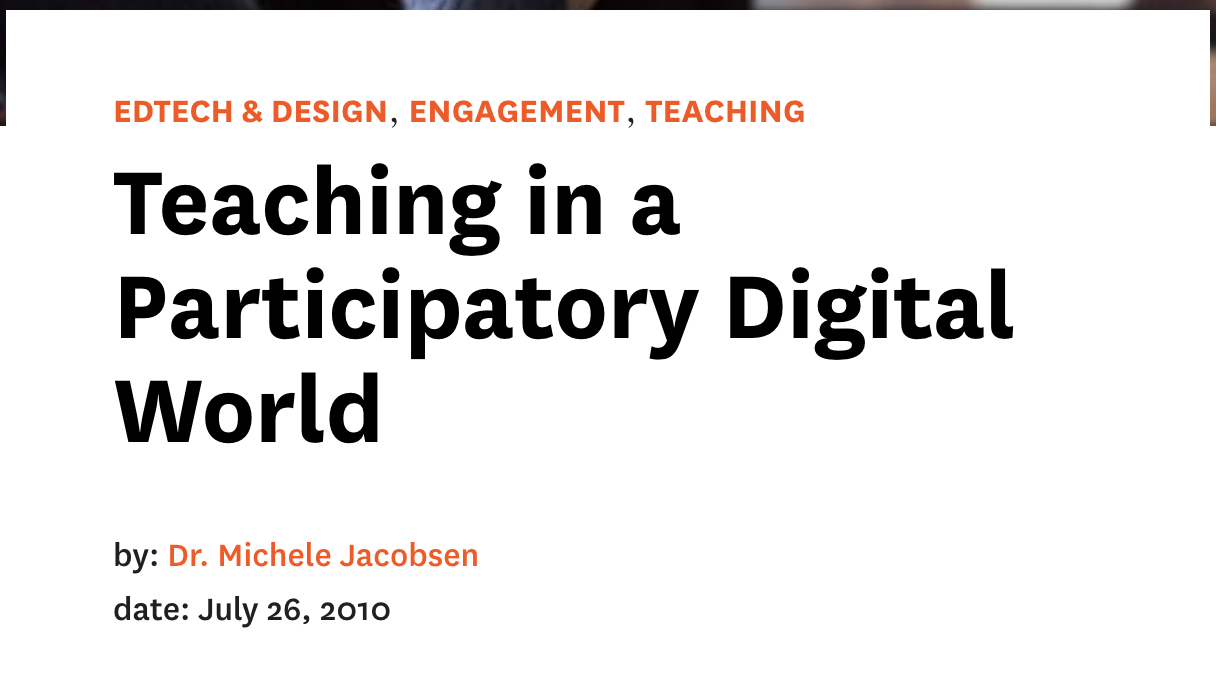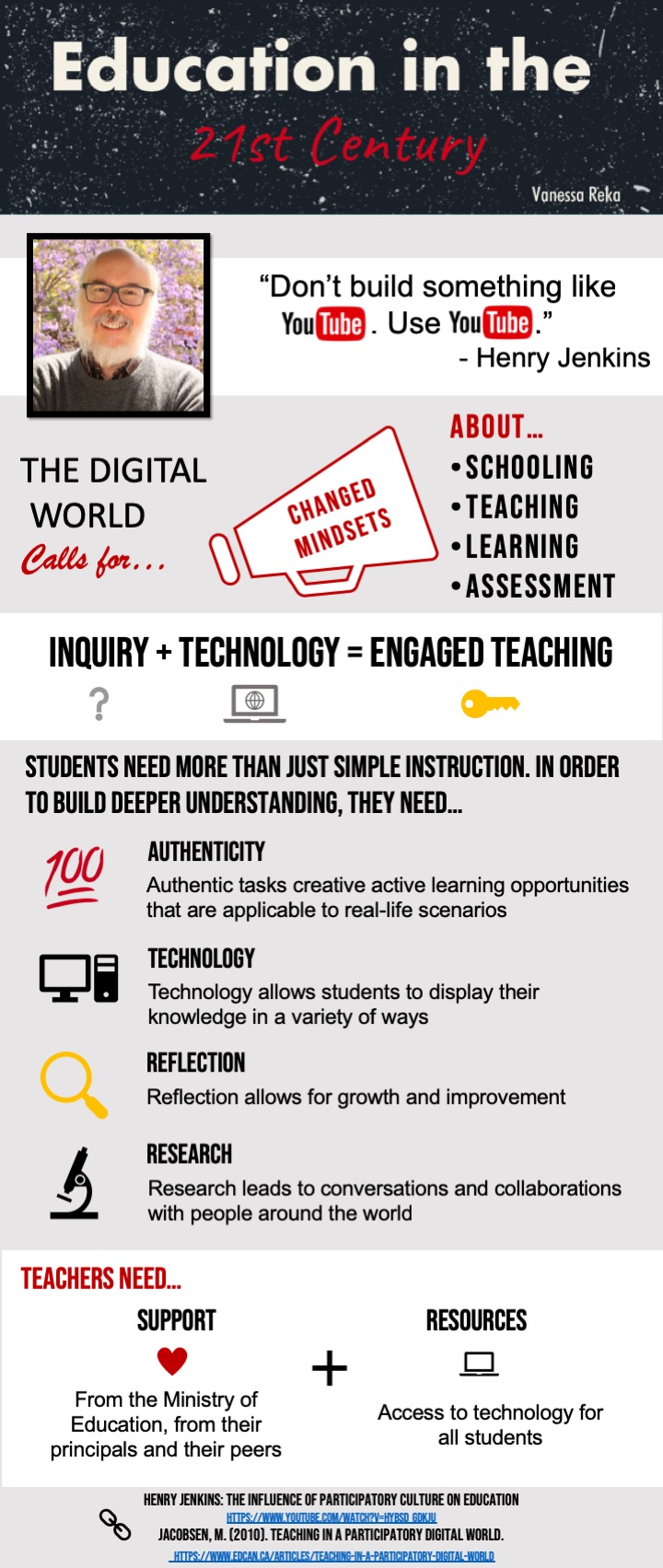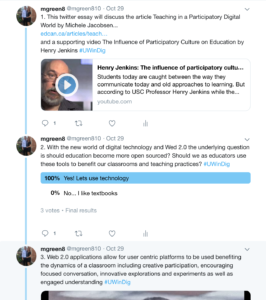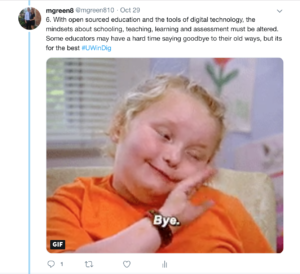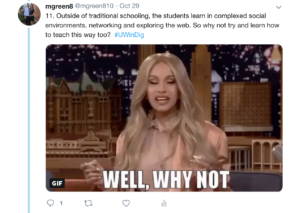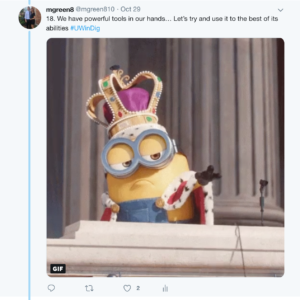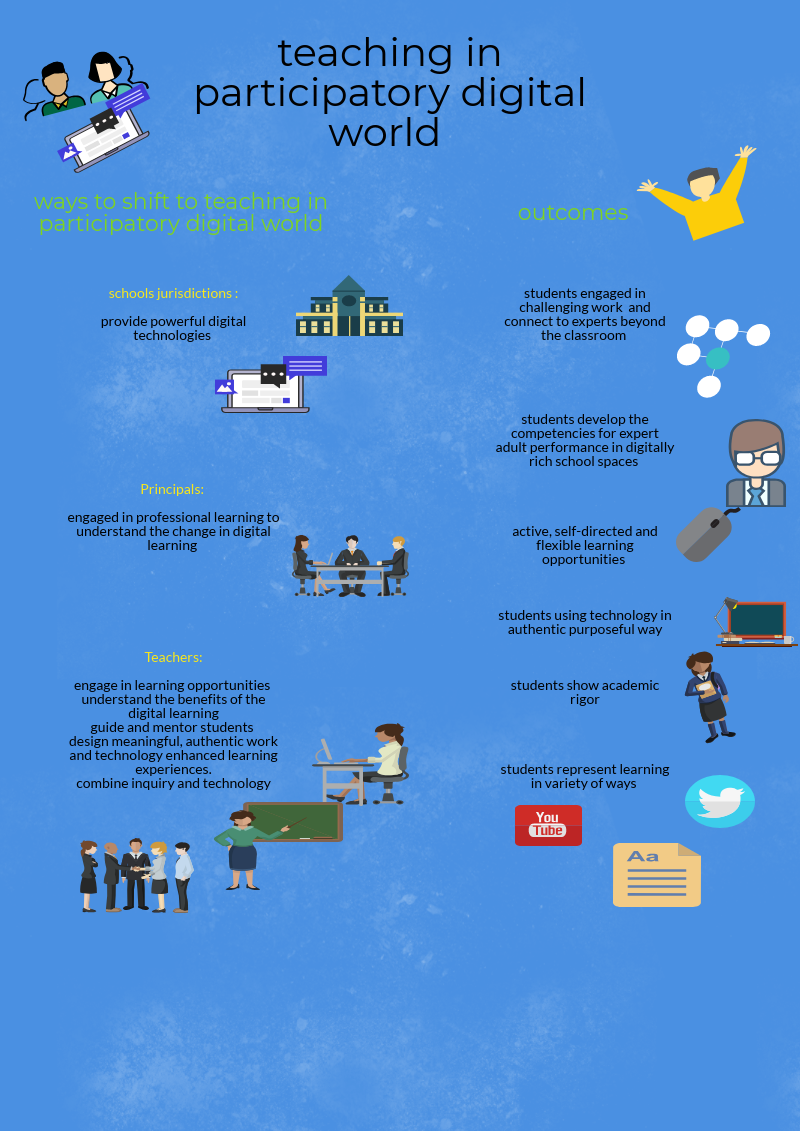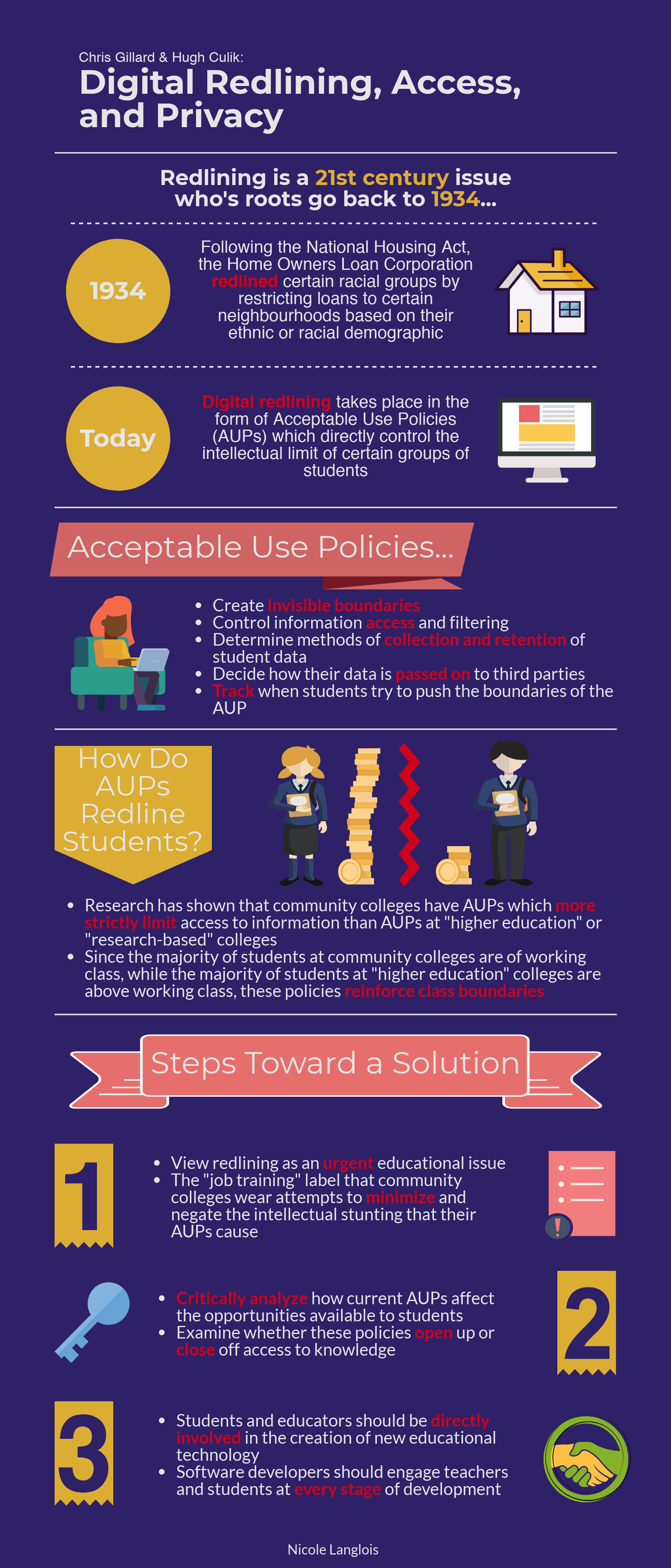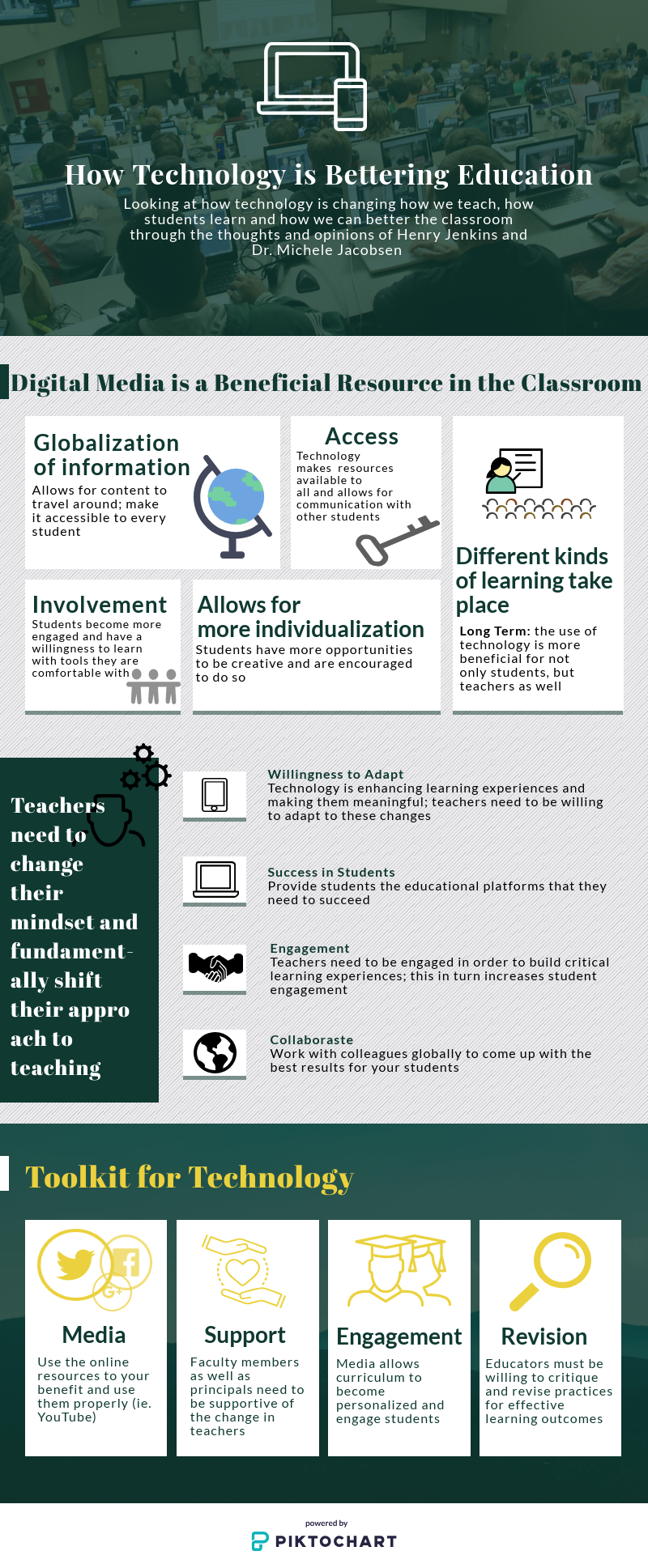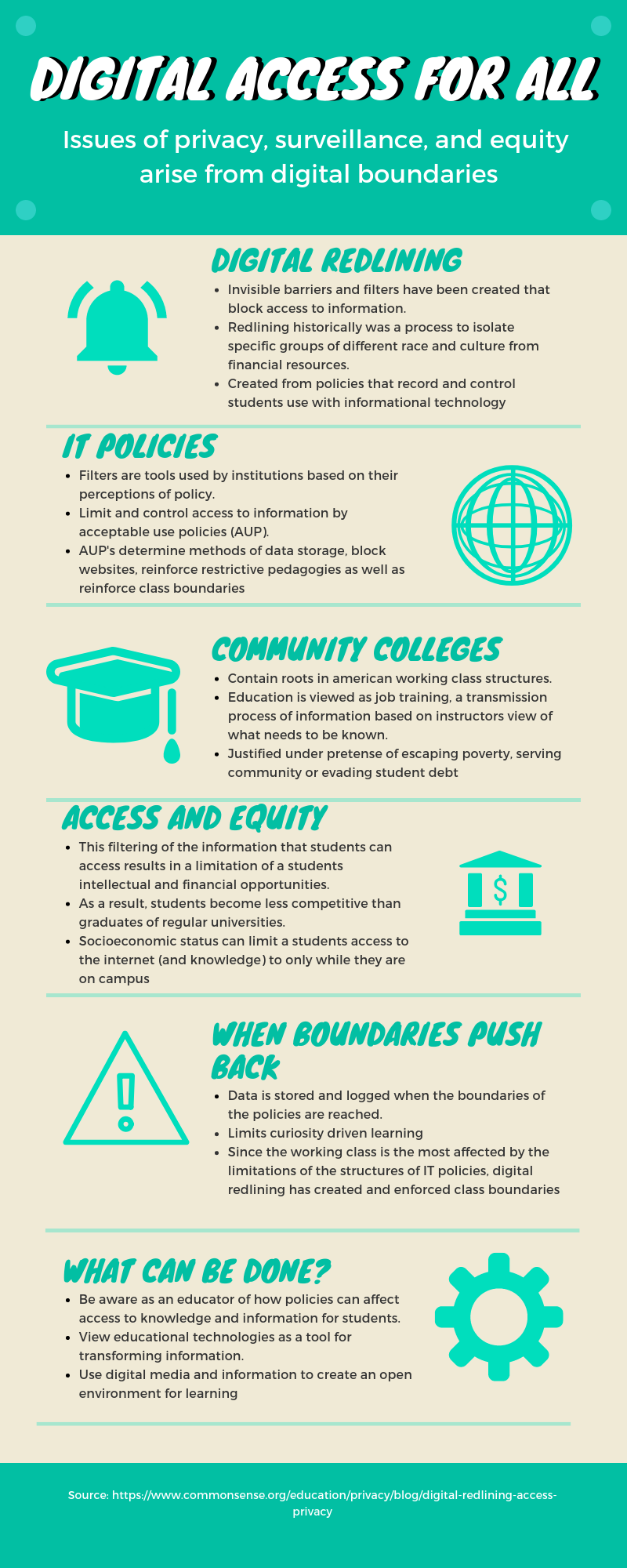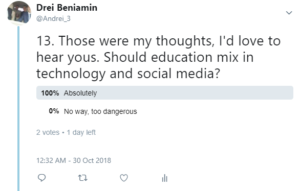Hey everyone! This time I decided to use Piktochart for Dr. Michele Jacobsen’s article “Teaching in a Participatory Digital World” and Henry Jenkin’s video “The Influence of Participatory Culture on Education“. Last time I attempted to make a sketch note…and I have come to find that Piktochart can be used in a similar way, except much less time consuming. The best part is being able to edit my assignment unlike the sketch note where once I write something down with pen or marker it’s set.
For this assignment it really started to open up my view of participatory culture and how digital society creates helps to promote participatory. Prior to reading through Michele’s article my perspective of teaching and learning with digital technology was low. I wanted nothing to do with it. I have continually taken a stubborn position in resisting the change because it has seemed too daunting for me to do online participation. I have tried to stick to only in person collaboration. BUT, I’ve come to learn that it is not as scary or difficult as I first thought and that it can actually be quite effective in learning and help keep both myself and students more engaged in whatever lesson or material is being taught.
During my placement my associate teacher was using a few different platforms and technologies that I found really enhanced the classroom learning environment. There was technology used that connected the students to the teacher online even after school and in a safe manner; there is always a concern that teachers need to be careful in communicating with students to ensure no inappropriate relationship is developed. Even the parents were able to connect to the same website between the students with a special login. The parents are able to both easily message the teacher and view the marks of their kids on this website. I found the students become continually engaged in participating in something called “missions” which is like a multiple choice quiz, but it also includes short teaching reminder videos in between. This was easily used because my associate teacher books an iPad cart for his class quite often. The students are really able to participate together in the online learning it really has boosted the class collaboration.
Another part I found interesting was the benefit of not just the students, but the teachers collaborating together as well. My associate teacher frequently participates in extra professional development and exchanges ideas with other teachers and this helps him to learn and improve upon his own teaching in the class room, especially with keeping pace with other classes in the same subject and grade.
The way I organized my piktochart was showing the new shift in digital technology and digital learning. I described how there are many benefits in teaching more in this way.


